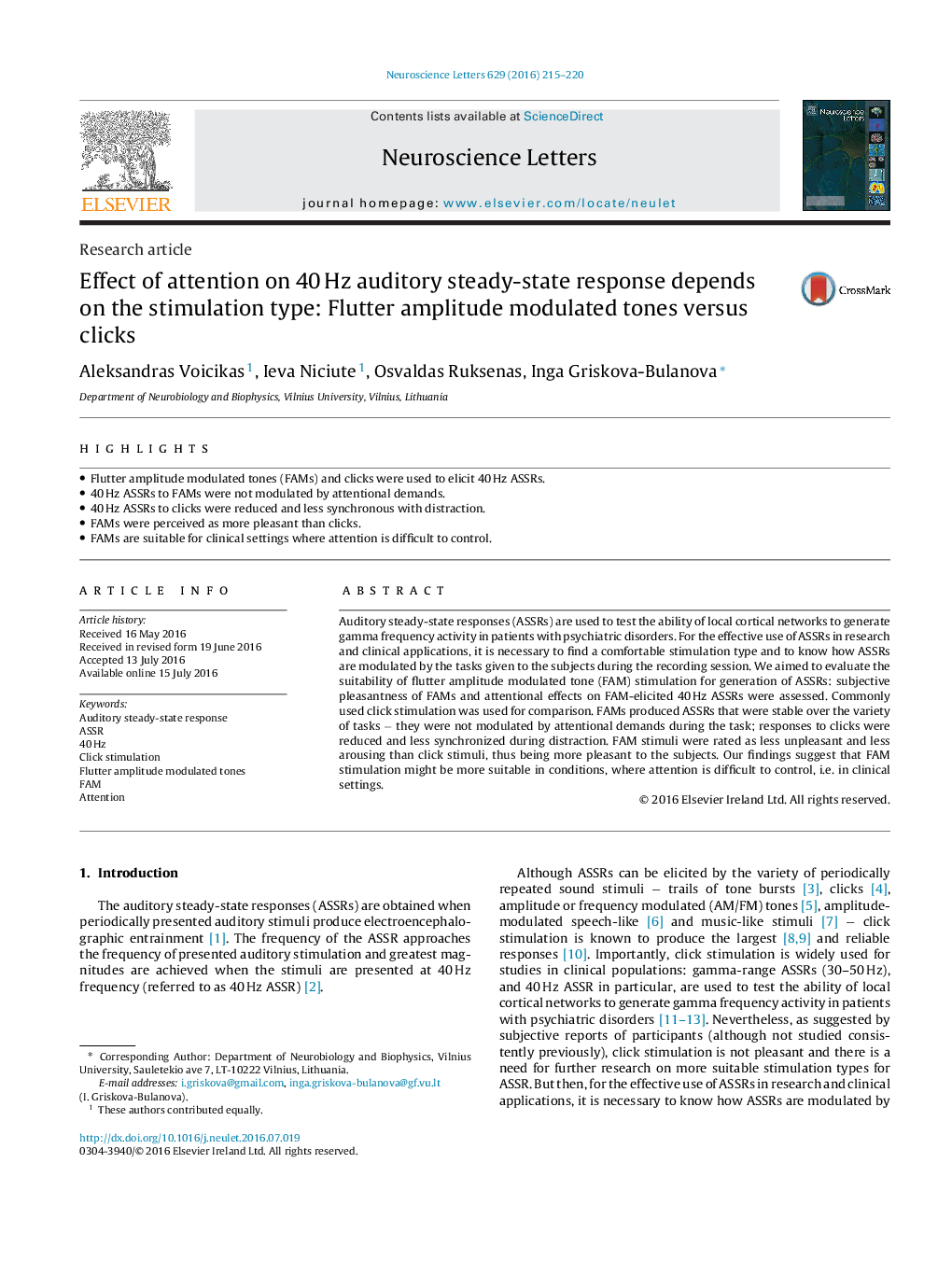| کد مقاله | کد نشریه | سال انتشار | مقاله انگلیسی | نسخه تمام متن |
|---|---|---|---|---|
| 4343239 | 1615070 | 2016 | 6 صفحه PDF | دانلود رایگان |

• Flutter amplitude modulated tones (FAMs) and clicks were used to elicit 40 Hz ASSRs.
• 40 Hz ASSRs to FAMs were not modulated by attentional demands.
• 40 Hz ASSRs to clicks were reduced and less synchronous with distraction.
• FAMs were perceived as more pleasant than clicks.
• FAMs are suitable for clinical settings where attention is difficult to control.
Auditory steady-state responses (ASSRs) are used to test the ability of local cortical networks to generate gamma frequency activity in patients with psychiatric disorders. For the effective use of ASSRs in research and clinical applications, it is necessary to find a comfortable stimulation type and to know how ASSRs are modulated by the tasks given to the subjects during the recording session. We aimed to evaluate the suitability of flutter amplitude modulated tone (FAM) stimulation for generation of ASSRs: subjective pleasantness of FAMs and attentional effects on FAM-elicited 40 Hz ASSRs were assessed. Commonly used click stimulation was used for comparison. FAMs produced ASSRs that were stable over the variety of tasks − they were not modulated by attentional demands during the task; responses to clicks were reduced and less synchronized during distraction. FAM stimuli were rated as less unpleasant and less arousing than click stimuli, thus being more pleasant to the subjects. Our findings suggest that FAM stimulation might be more suitable in conditions, where attention is difficult to control, i.e. in clinical settings.
Journal: Neuroscience Letters - Volume 629, 26 August 2016, Pages 215–220